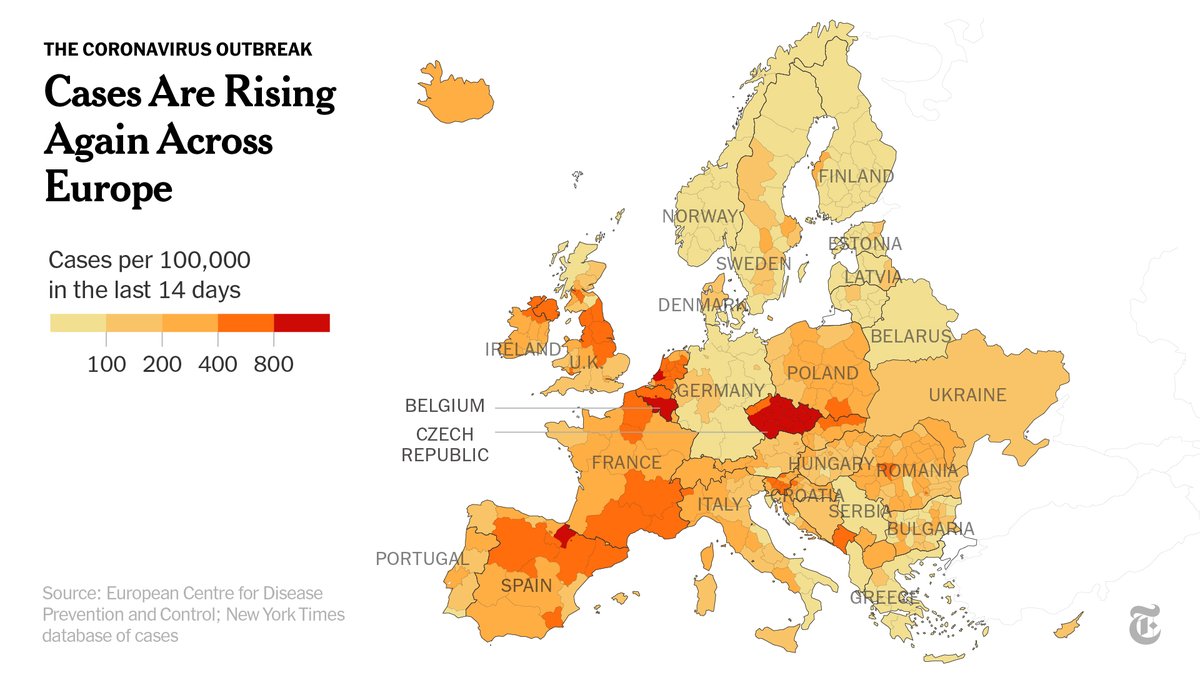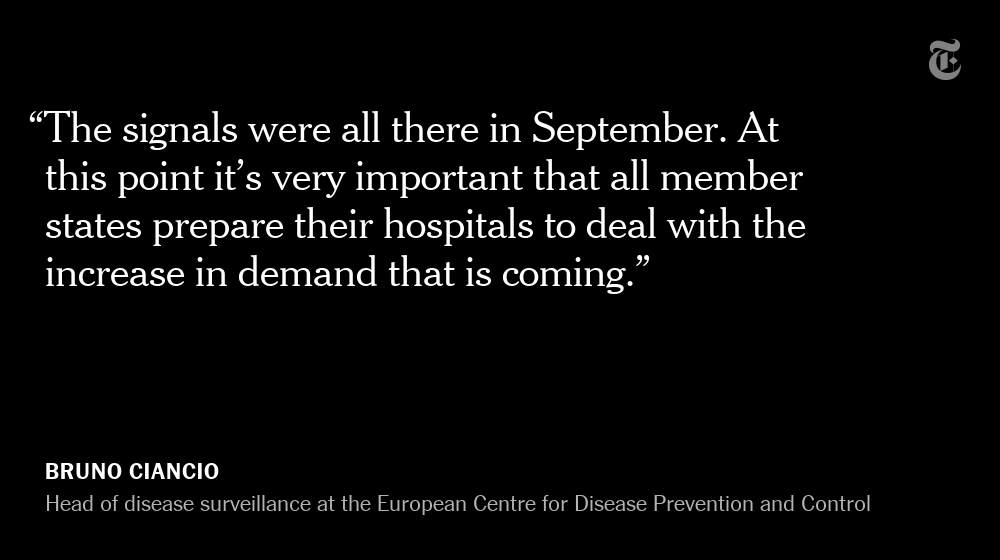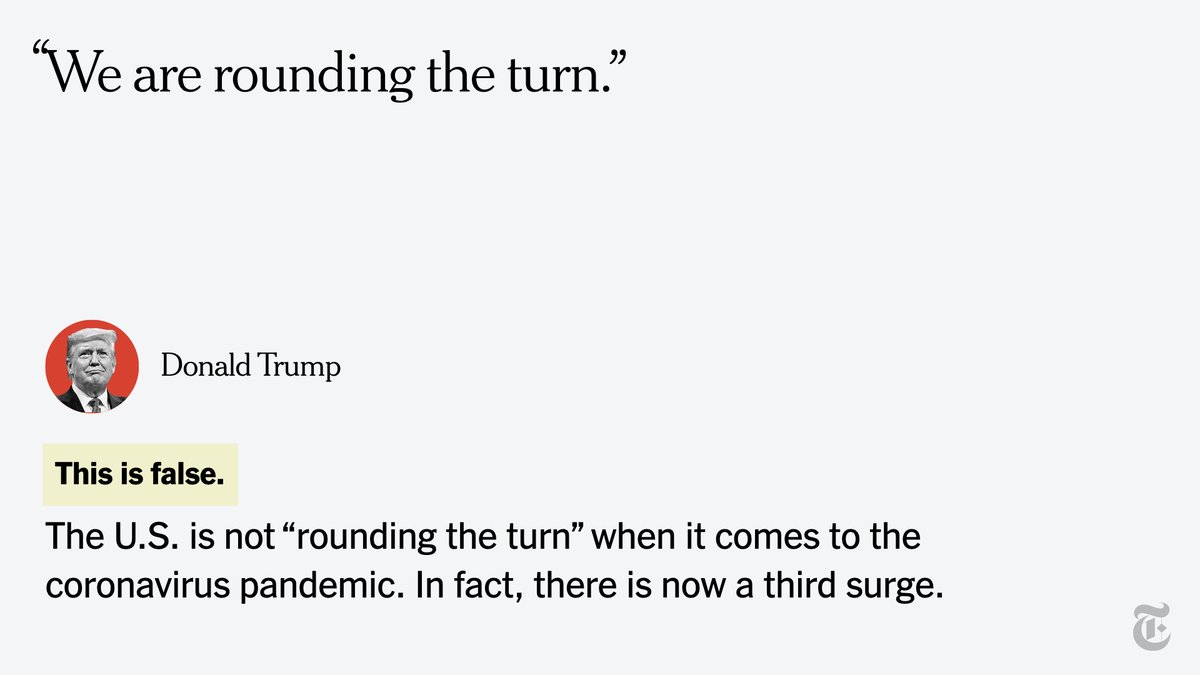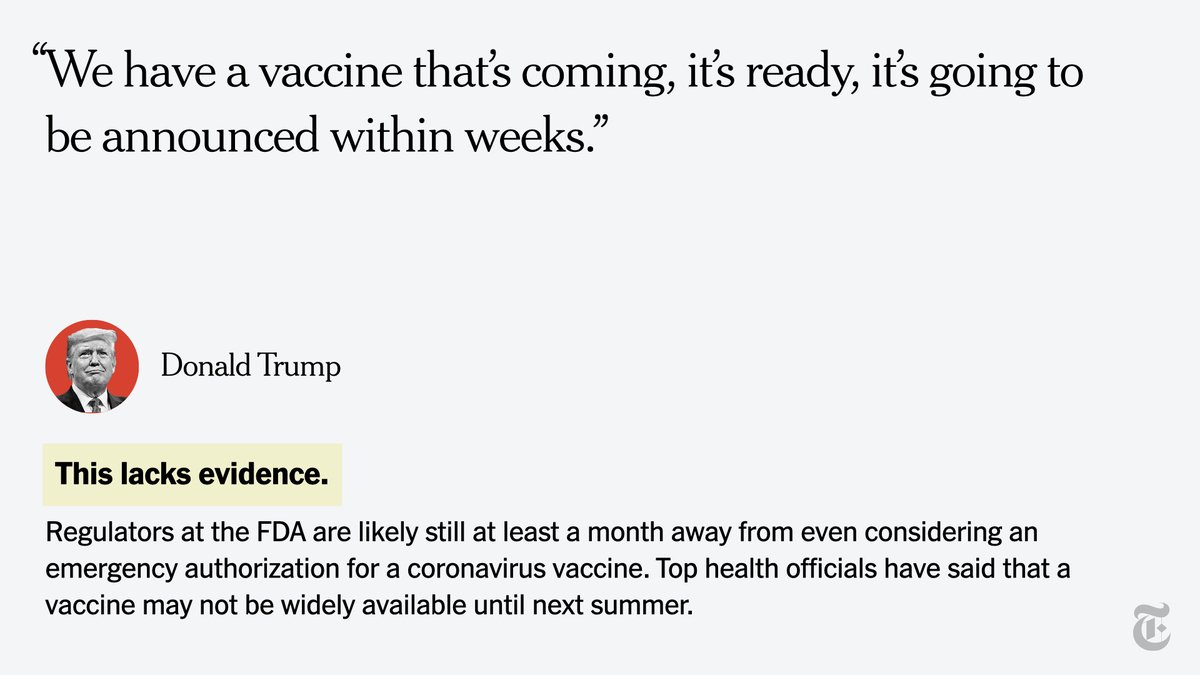
Most of the worst virus outbreaks in the U.S. right now are in rural areas.
Earlier peaks saw the virus concentrated in cities and suburbs, but the current surge is hitting remote areas that often lack a hospital or other critical health care resources. nyti.ms/2Thspnj
Earlier peaks saw the virus concentrated in cities and suburbs, but the current surge is hitting remote areas that often lack a hospital or other critical health care resources. nyti.ms/2Thspnj
Since late summer, new cases per capita in rural areas in the U.S. have been outpacing those in larger metropolitan areas.
Almost all the counties with the largest outbreaks have populations under 50,000, and most have populations under 10,000. nyti.ms/2Thspnj
Almost all the counties with the largest outbreaks have populations under 50,000, and most have populations under 10,000. nyti.ms/2Thspnj

The rural share of the virus burden has grown over time.
Now, about one in four deaths from the virus is recorded in a rural county. nyti.ms/2Thspnj
Now, about one in four deaths from the virus is recorded in a rural county. nyti.ms/2Thspnj

Hospitals across the Upper Midwest and the Mountain West are feeling the surge. Facilities are struggling with capacity, and in some cases residents are finding that the nearest hospital with available beds is hours away, or in another state. nyti.ms/2Thspnj 

Foster County, North Dakota, a community of just over 3,000, recorded one positive case in the spring. By mid-July, it had just two more.
But by this week, about one in every 20 residents had tested positive.
It’s happening across much of the rural U.S. nyti.ms/2Thspnj
But by this week, about one in every 20 residents had tested positive.
It’s happening across much of the rural U.S. nyti.ms/2Thspnj
• • •
Missing some Tweet in this thread? You can try to
force a refresh










